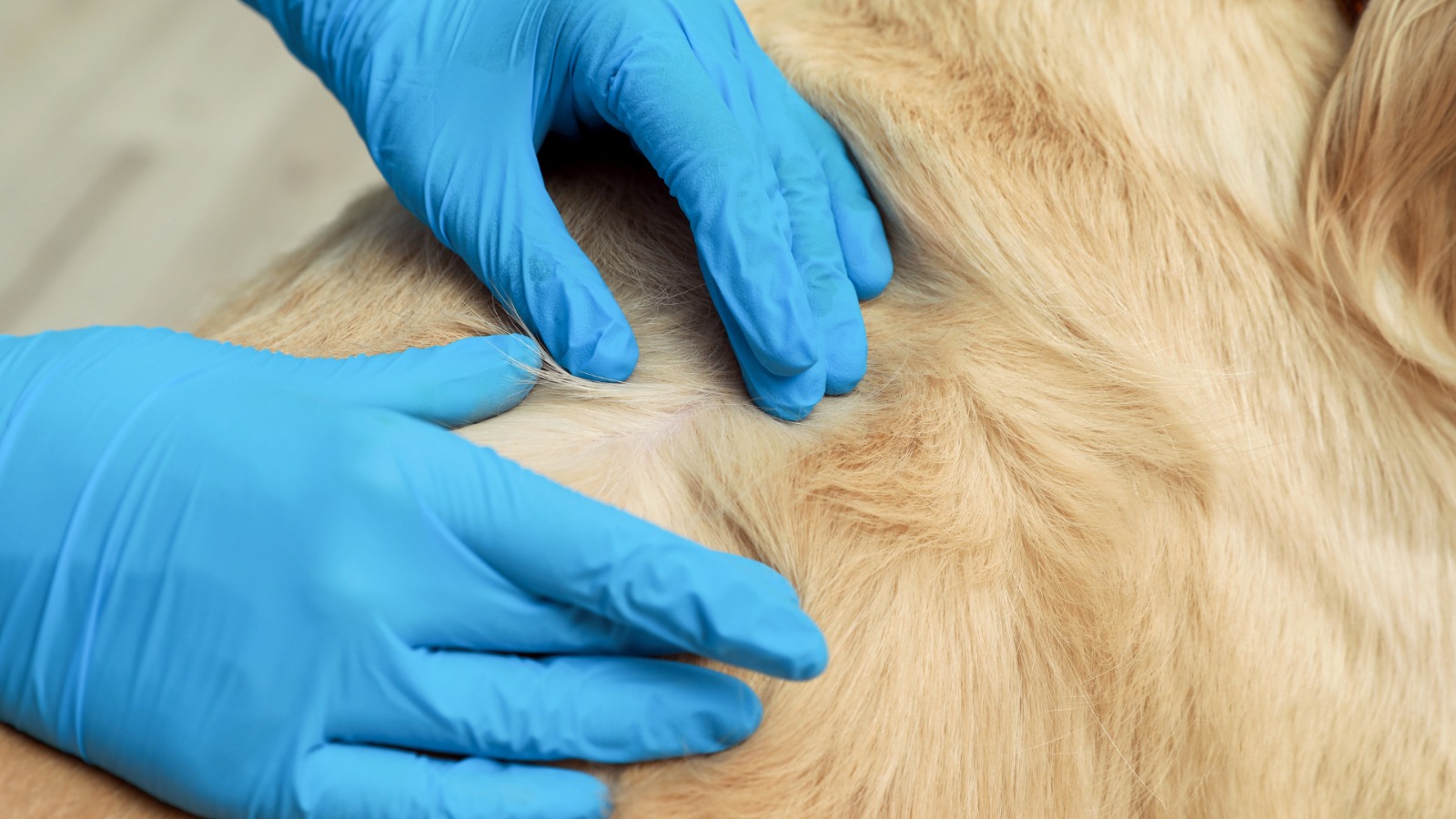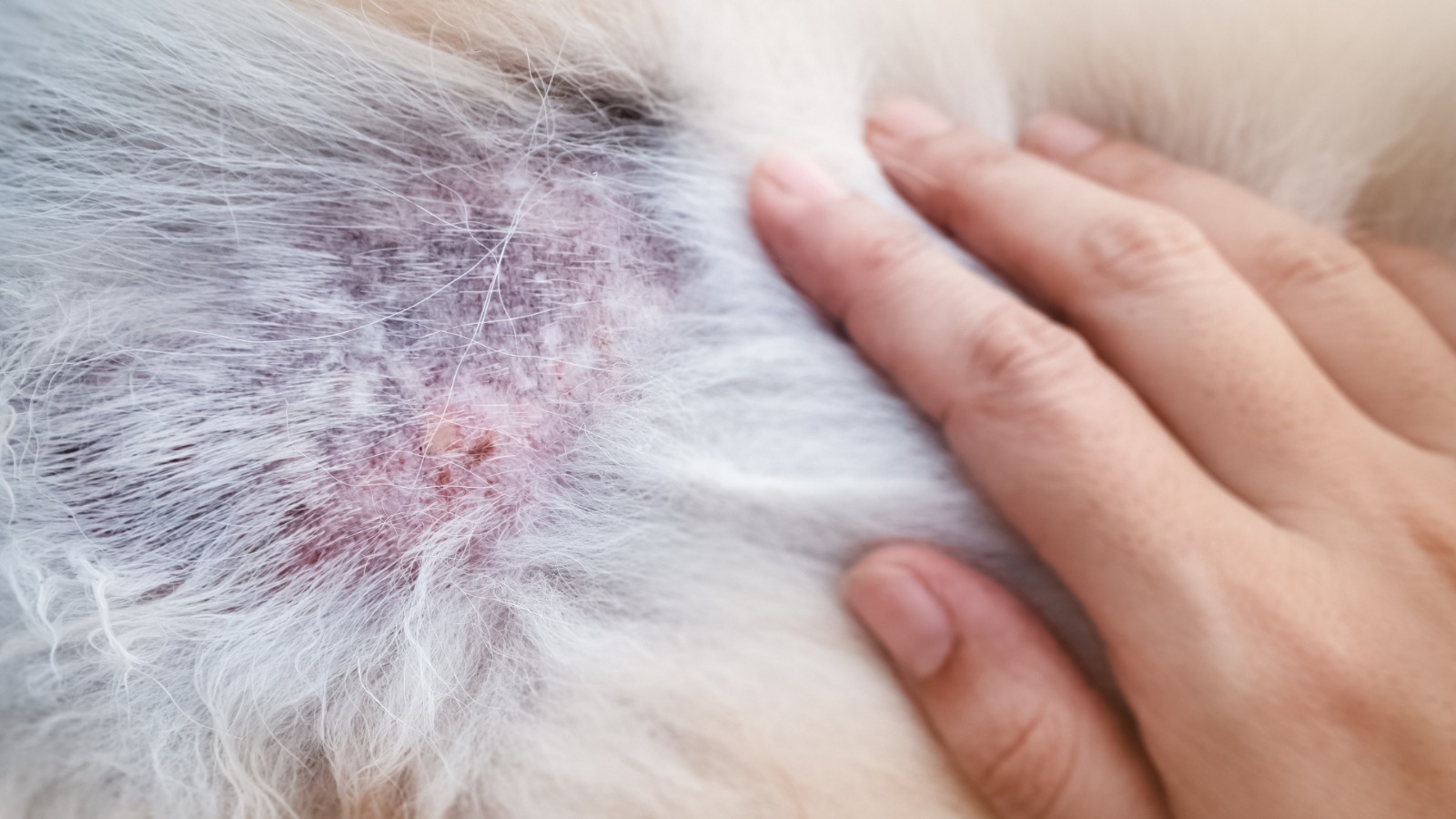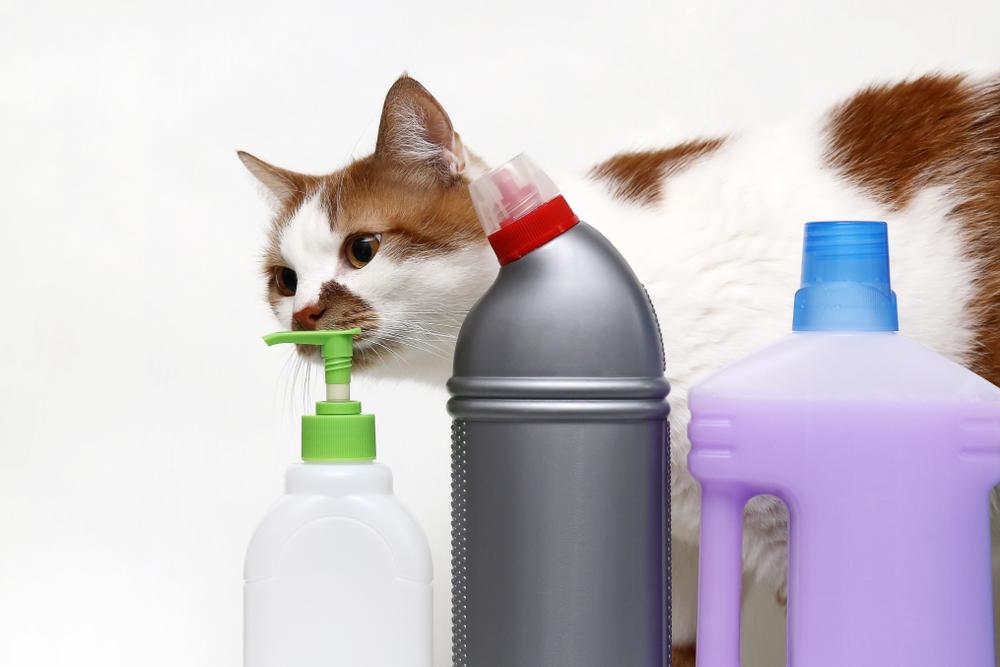Omega oils are one of the most important components of your pet’s diet, but with such variety of products on the market, aimed both at animals and humans, how do we know which to opt for? Here at My Pet Nutritionist, we recommend a variety of different products from various different brands, and for many different reasons! This blog past aims to help you choose the right omega source for your pets, and explains how to tell one product from the next!
What Are Omegas?
Omegas are Fatty Acids with a huge variety of uses within the body. Cell membranes are partly formed by Omegas, which deems them an essential nutrient for all living beings. Brain and heart health are both aided by omegas, as well as weight management and cognitive development during puppyhood, and as seniors. Omegas also control part of the body’s inflammatory response, making them useful for joint health, as well as aiding the management of, prevention of, or treatment of many health conditions. Omega Fatty Acids come in three types:
Omega 3 and Omega 6 fatty acids are both classed as ‘essential’ nutrients
Omega 9 is classed as non-essential but is beneficial to include in the diet
So how do the three types of omegas differ chemically? Each different type of omega has not only a different chemical structure, but they have a different amount of saturation of fat. Let’s take a look at their differences a bit more closely.
- Omega 3 Fatty Acids are ‘polyunsaturated’, which means there is more than one unsaturated carbon bond. In a diagram of chemical structure, you will see two or more ‘double bonds’ between carbon atoms, with a hydrogen atom missing. These polyunsaturated fatty acids cannot be produced by the body, and must be consumed in the diet.
- Omega 6 Fatty Acids are also ‘polyunsaturated’, however two of the Omega 6 Fatty Acids are able to be produced by the body, leaving the third needing to be consumed in the diet.
- Omega 9 Fatty Acids are ‘monounsaturated’, which means there is only one unsaturated carbon bond. In a diagram of chemical structure, you would see only one ‘double bond’ with no hydrogen attached to the carbon atoms. These fatty acids can be produced by the body, which makes them non-essential in the diet.
We mentioned that some omegas play a role in the body’s inflammatory response, so let’s discuss which ones are inflammatory, and which are anti-inflammatory.
Omegas 3 and 9 have some fantastic anti-inflammatory effects on the body, which aids joint health, and is also a contributor to the reduced risk of cancers. There is also one Omega 6 fatty acid which is anti-inflammatory. The names and health roles of these anti-inflammatory Omega 3, 6 and 9 Fatty Acids are as follows:
- Eicosapentaenoic Acid (EPA): Omega 3 Fatty Acid playing a role in general reduction in inflammation.
- Alpha-linolenic Acid (ALA): Omega 3 Fatty Acid playing a role in heart and immune health.
- Docosahexaenoic Acid (DHA): Omega 3 Fatty Acid playing a role in brain health and cognitive development.
- Gamma-linolenic Acid (GLA): Omega 6 Fatty Acid aiding the control of hormones.
- Oleic Acid (OA): Omega 9 Fatty Acid plays a large role in prevention of cancer and heart disease, and reduction of cholesterol.
The other Omega 6 Fatty Acids are inflammatory, which negate the omega 3, and vice versa. It is very much a balancing act of omega 3 and 6 consumption, to receive the benefits of omega 6, but keep inflammation to a minimum.
- Linolenic Acid (LA): Omega 6 Fatty Acid which helps to prevent heart disease, keep a regular heartbeat, and potential to prevent blood clots.
- Arachidonic Acid (ARA): Omega 6 Fatty Acid which as an important signalling molecule, plays a huge role in the mediation of many cellular functions such as remodelling actin, a extremely important protein in some cells in the body, useful for protein-protein interactions.
Findings Here
Findings Here
Findings Here
Sources of Omega
Where can we find these all important Omegas in order to add them into our pet’s diets? There are so many sources of Omegas, some good, some not so advisable. They are found in many forms, from fresh foods, to extracted oils which come in capsules, or in a large bottle, usually with a pump. There are meat based sources of omegas, and there are plant based sources of omegas. Some of the most popular sources of each type of Omega 3, 6 or 9 Fatty Acid we have discussed so far in this blog post, are:
- Eicosapentaenoic Acid (EPA): found in fatty fish and fish oils, as well as many algal oils.
- Alpha-linolenic Acid (ALA): found in flaxseed oil, chia seeds, walnut oil, perilla oil or oysters.
- Docosahexaenoic Acid (DHA): found in fatty fish , fish oils and algae oils, and eggs.
- Gamma-linolenic Acid (GLA): found in Hempseed oil, borage oil (to be given with caution, in small quantities only), and evening primrose oil (to be given with caution, and not to be given to epileptic pets)
- Linolenic Acid (LA): found in sunflower oil, some nuts, seeds, olive oil, flaxseed, avocado oil (though the amount here is low) and eggs.
- Arachidonic Acid (ARA): found in meat and poultry, particularly farmed.
- Oleic Acid (OA): found in olive oil, some fish oils, and some nuts.
What to Look Out For
When it comes to picking an omega source for our pets, as with anything, most of us want to make an informed decision to pick the absolute best for our furry friends! With such huge variety of Omega products on the market, how to we know what is best? How is one product different to another?
As with many dietary additions, there are many qualities to look out for or avoid in different products. Not all products are equal in quality, so that’s where we come in handy – keep reading for pointers on selecting a source of omegas for your pets!
Fresh Food Sources
As with most things we recommend as a first port of call her at My Pet Nutritionist, we would always opt for fresh food options, first and foremost. The fresher, the better, from a nutritional perspective.
There are so many fresh omega source options available! Raw eggs are not only a fantastic source of Omegas, but they’re real nutrient powerhouses too! They are extremely nutrient dense, and really are the perfect addition to most meat-eating pet’s diets! We get a lot of readers concerned that feeding raw eggs isn’t safe, however to combat this common misconception, we created a whole blog about the safety of feeding raw egg to your cats and dogs, which you can read
here!
Moving onto whole fish. There are some excellent sources of omegas in the form of oily fish. Smaller species of oily fish are much preferable to larger species. Smaller fish species such as sprats, mackerel, anchovy, sardine, and herring are all excellent choices! Some supermarkets may stock these, as will some fishmongers.
Larger fish are more at risk of toxic contamination, such as salmon. While fresh Atlantic salmon is a good source of omegas, it does come with the toxicity risk, so would be our least favourite fresh fish recommendation. Try to avoid tuna and other species that live deeper in the sea, as these are more prone to carrying higher levels of mercury than smaller species living closer to the sea surface.
We do not recommend feeding a diet purely consisting of raw fish as this would not be complete, and may lead to deficiencies such as thiamine. Balanced, cooked fish meals are a better option in our experience. If you’re feeding a ruminant protein such as lamb, beef, goat, pork, venison or elk, you can feed 28-30g of whole fish per 450g of protein, and if you’re feeding poultry, you can feed 100-120g of whole fish per 500g of protein.
If you are lucky enough to reside in New Zealand, where true Green Lipped Mussels grow naturally, these are a fantastic source of omegas, as well as other joint friendly components, so can make a great addition to your pets bowls! If you’re reading from the UK, or other parts of the world, you may be able to get your hands on some frozen, imported Green Lipped Mussels too!
Fish Oils
So we have covered fresh fish; but there are lots of popular fish oil products on the market too, which can be more convenient for some, and not straying too far from the most natural sources of omegas.
There are lots of fish and seafood based choices, from salmon oil to sardine oil, to anchovy oil, to krill oil, and many more in between. Generally speaking, the more stable (despite not being super stable themselves) options tend to be the smaller species oils, like sardine and anchovy oil, and seafood oils like krill oil, over the likes of salmon oil. Salmon oil can still be used, but it’s important to select the right one, which you can learn how to do in our blog
here!
Fish oils will come in two forms – encapsulated, and liquid in bottles, usually with a pump or screw top fitted.
Believe it or not, one is a better option than the other! We would always advice aiming for an encapsulated fish oil, over liquid in a bottle. This is largely down to oxidation. Fish oil is already very unstable, and highly susceptible to oxidation. Being free in a bottle, means that as soon as the seal is broken, oxygen is able to get to the oil, causing oxidation. When consumed, oxidised oils can lead to various negative affects in the body. When looking at encapsulated fish oils, we advise looking for capsules stored in a dark, glass bottle to reflect sunlight and heat, and aid longevity of the product.
Fish oils in capsules only suffer a little oxidation during manufacturing, which we will go into a little more detail later on in this section. Being in a capsule keeps them away from direct contact with oxygen, which is what we want to aim for. Keeping them in the freezer helps further preserve the fish oil, too!
A further point to take on board when looking for a suitable fish oil, is to find a company who states peroxide levels prior to packaging. Ideally, pre-packaging peroxide levels should be below the value of 2.
Plant Based Options
For those who struggle with allergies and intolerances to various proteins, a plant based option may be beneficial for your pet. They can also be used in addition to others mentioned in this blog, for variety, and a broader range of omega fatty acids.
Algae oil is a fantastic choice – one of the ones we recommend regularly in our consultations. Extracted from specifically grown species of microalgae, algae oil is very high in EPA and DHA. The growth conditions for the algae are specifically altered for optimum omega benefits – the temperature, exposure to UV light, access to oxygen, glucose and sodium are all factors in algae growth for omega content. Studies show that the omega 3 content of algae oils matches that of fish based sources! Follow the dosage instructions on your chosen algae based product!
Findings Here
Borage/Starflower Oil contains high amounts of GLA (the only anti-inflammatory omega 6) and ALA (omega 3). This option is often beneficial for joint care and maintenance, but it does come with a caveat! Lots of studies point toward this option causing liver damage if given in the incorrect quantities, so while it can be used, it’s best in smaller dosages, and/or used infrequently.
Findings Here
Hempseed (milled) and
Hempseed Oil are becoming quite popular in the pet world as the hemp plant has lots of fantastic benefits, though parts are to be used with caution. Hempseed oil is a great source of LA, and is best used in situations where the consumer requires blood pressure to be lowered. If feeding hempseed oil, you can give 2-3tsp per 1kg of food, or 1tsp per 5kg bodyweight. If feeding milled hempseed, you can give 4-6tsp per 1kg of food.
Findings Here
Chia Seeds are a great source of ALA. They are quite oily seeds, but around 60-75% of the fats in these tiny powerhouses, are omega fatty acids! These aren’t a single solution to your pet’s omega needs as they are nowhere near as potent as the likes of fish, fish oils, or algal oils, but can certainly contribute to your pets’ regular omega intake. Chia seeds can be prepared with water, or with bone broth or kefir to add extra health benefits. Those with pets needing additional cardiovascular support may be interested in supplementing their pets’ meals with chia seeds, in particular.
Lastly, another fairly popular option on the market, which is being seen more and more in pet targeted omega products, is
Flaxseed Oil. While flaxseed is a fairly decent source of Linoleic Acid, it is extremely difficult for the body to convert it into more useful omegas, EPA and DHA, so it isn’t one we recommend to use for omegas. It can still be used to aid bowel movements, and is a good source of various micronutrients such as iron, potassium, vitamin B12, phosphorous, and calcium. It’s particularly good to feed along side meat from ruminants or chicken. You can give up to 1tsp of flaxseed or flaxseed oil per 10kg bodyweight.
Findings Here
Tinned Fish
Tinned fish is super easy to get hold of, and can be a great source of omega 3 – and it can easily be used in canine and feline enrichment toys like lickable mats, fillable toys etc too! Tinned sardines and mackerel are the best options available on the market.
With so many options of tinned sardine and mackerel, it can be tricky to work out which ones are best to feed! We would recommend feeding ‘in spring water’ varieties the most, but those in olive oil can be fed too, as can the occasional treat of those in brine, as most fresh diets (especially raw diets) are lacking in sodium, so a little salt from the brine can be beneficial. Try to avoid feeding varieties in sunflower oil, as the high omega 6 content negates the useful omega 3 in the fish itself.
Tinned fish can be fed 2-3 times a week!
Ghee
If you’re looking for a fatty acid rich treat, ghee may be the answer for you! Ghee is a clarified butter, made using products from grass fed sources. it is far healthier than butter, and can be great as a vessel for giving tablets to your pet. it can also be used in the making of Golden Paste to not only help carry and activate the turmeric, but also adding additional anti-inflammatory qualities down to it’s content of Omega 3 Fatty Acids, especially DHA. You can feed up to 1/2 tsp per 5kg bodyweight.
Findings Here
Additional hints and tips
There are some things to look at when picking a specific omega product. Always remember, not all products are equal, and many companies may use some clever marketing techniques to make their product seem better than others!
When looking at products, you may see certain additives. Antioxidants are commonly seen in omega oils, especially fish based options, because they are so unstable and vulnerable to oxidation. The popular options are ‘tocopherols’ and rosemary. Tocopherols are Vitamin E, which boasts brilliant antioxidant qualities. This is a natural product, and also helps prevent blood clots, aids immune strength, promotes healthy muscle growth, and benefits the nervous system. Rosemary is a common herb, often grown in gardens across the UK, and also used in cooking. Extract of rosemary in the form of oil is used a lot in the food industry for both humans and pets, and of course in supplements too! Rosemary extract is renowned for tackling free radicals as it has amazing antioxidant properties, and it is more stable than tocopherols too!
If you choose to use a liquid version of omega oils, it’s wise to purchase only a very small bottle, keep it in the refrigerator, and check for either of these antioxidants, as they could help to extend it’s life.
Another quality to look out for when choosing an omega supplement, particularly a fish based one, is emulsification. Emulsified fats are much easier for the body to break down and absorb, using the enzyme, lipase. It may be a good idea to contact the manufacturers of your chosen products, to ask them about their manufacturing process, and whether their products are emulsified or not. Studies show a trend that emulsified fats yield better absorption rates of omegas than encapsulated fish oils!
Findings Here
Findings Here
The final extra tip, also requires you, the consumer, to consider contacting manufacturers of your chosen products regarding their extraction and filtration processes, this time to check if their products are esterified. Esterification occurs when the omegas undergo a chemical reaction to produce triglycerides, cholesterol esters and phospholipids (which are the main component of cells in the body!).
Esterification of omega 3 and 6 fatty acids causes assimilation into predominantly phospholipids, changing their structure to be most useful for overall cell health within the body, by helping to keep cell structure robust, and cell membranes functioning properly throughout. There are some suggestions that non-esterified omega fatty acids can cause a few health problems later in life, however more research is needed in this area to confirm these suspicions. Having a good mixture of both esterified, and non-esterified omega sources in your pet’s diet allows for a broader array of health benefits.
Findings Here
Findings Here
Products we Love!
When our customers consult with our team, there are some products we tend to recommend over others. The following brands and products are excellent quality, and safe for your pets!
When you compare your pet’s omega supplements to those mentioned in this blog post, do your choices fit the bill? Are they clean? If your feel you require some extra help picking a supplement for your cat or dog, book in with one of our team, who will help guide you through selecting the ideal omega source for your pet.
Team MPN x 















